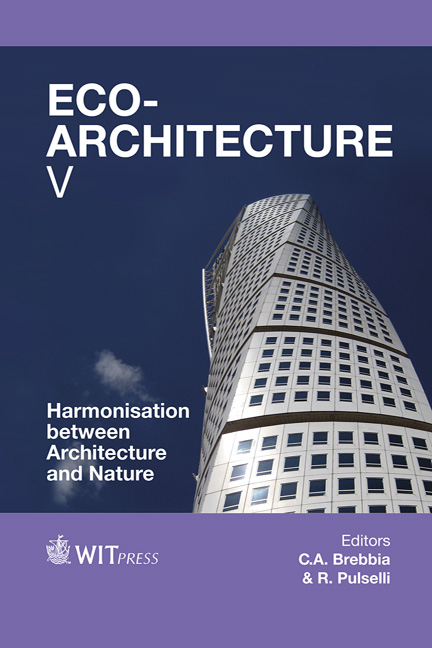Life Cycle Assessment Of Greenhouse Gas Emissions Arising From The Production Of Glued And Pressed Wall Panels Derived From Guadua Angustifolia Kunth (bamboo) In Ecuador
Price
Free (open access)
Transaction
Volume
142
Pages
11
Page Range
447 - 457
Published
2014
Size
760 kb
Paper DOI
10.2495/ARC140381
Copyright
WIT Press
Author(s)
A. D. Ramirez, D. Torres, P. Peña, J. Duque-Rivera
Abstract
Traditionally in coastal Ecuador, Guadua Angustifolia Kunth (GAK), a bamboo cane, has been used as a wall material. Typically, the GAK cane is opened and used almost directly without any preservation as wall material in underprivileged areas. A local entrepreneur is developing glued and pressed panels derived from GAK. It is claimed that the GAK glued and pressed panels (GAKGPP) last for 40 years, while traditional GAK walls last for 5 years. Life cycle assessment (LCA) is a quantitative environmental assessment tool that has been used to assess all type of products and services. LCA can also be used as a methodological framework to quantify emissions affecting Climate Change, the result from such an LCA is commonly known as Carbon Footprint (CF). The CF associated with the production of the GAKGPP has been calculated using a life cycle approach with the objective of determining the main contributors to the CF and analyzing the climate benefits of using GAKGPP in comparison to the traditional GAK panels. The main study has a cradle-to-gate approach; phases included in the product system are: agriculture, production of inputs, transportation of main inputs and GAK canes, and panels manufacturing. Durability during the use phase is included only to perform the comparison. Data to quantify product flows have been compiled from a GAK farm, a panel manufacturing plant, literature and databases. Data to quantify GHG emissions have been calculated using guidelines, literature, and/or derived from databases. The main contributors to the CF of the GAKGPP are the production of the glue chemicals and the transport of the GAK canes from the farm to the manufacturing plant. It is found that the durability of the GAKGPP during the use phase is a fundamental aspect to assure climate benefits when compared to traditional panels.
Keywords
carbon footprint, LCA, bamboo, GHG, climate change, wood, durability





